Let me save you some trouble: Panama will surprise you. Not with its canal (though yes, it’s as impressive as promised), but with the hundred little things nobody warns you about. Like how “dollarized” doesn’t mean “just like the U.S.,” why you should never expect a quick coffee, and how to tell when a taxi driver is quoting the “gringo price.”
I learned these lessons the hard way—through overpaid fares, soggy ‘dry season’ clothes, and more confused transactions than I’d care to admit. This list is my pay-it-forward guide, so to speak. We'll begin with the big-ticket items (hello, canal!), and then focus on the practical knowledge that will actually shape your day-to-day Panama experience.
Consider it your advance heads-up from someone who’s lived there.
1. Panama is most famous for its canal

Panama is best known for the Panama Canal, an engineering marvel that connects the Pacific and Atlantic oceans.
The canal has been crucial to maritime trade ever since it first opened in 1914. It cut 5,000 miles from the journey between the Atlantic and Pacific Oceans, saving both fuel and time. With lower shipping prices and faster shipping times, merchants can charge less at the store!
If there’s one thing you must do on your trip to Panama, it’s definitely visiting the Panama Canal. The Miraflores Locks are only a few minutes outside of town, and it’s an easy day trip from Panama City.
The Miraflores Visitor Center documents the canal’s construction process. If you visit it, you’ll be able to watch ships pass through the locks, and you’ll come to appreciate just how difficult it was to build it.
Digging a channel across the isthmus of Panama was so challenging that the first builders (France) actually gave up. Thousands of workers died from diseases and accidents during its construction, and the financial cost was exorbitant.
💡 COOL FACT: On average, around 12,000 to 15,000 ships pass through the Panama Canal every year; it takes about 8 to 10 hours to complete the journey.
2. Panama runs east-west
One of the most surprising facts about Panama is that it’s the only Central American country that doesn’t run north to south. The country is shaped like an almost perfect sideways “S,” with the Atlantic/Caribbean to the north and a large peninsula that juts south into the Pacific Ocean to the south.
The highest point in Panama is Volcan Baru, an inactive volcano in Boquete. If you climb to the top, you can see both oceans, the Atlantic and Pacific, at the same time. The volcano is part of the central spine of mountains that runs through the country.
3. Panama uses the U.S. dollar.
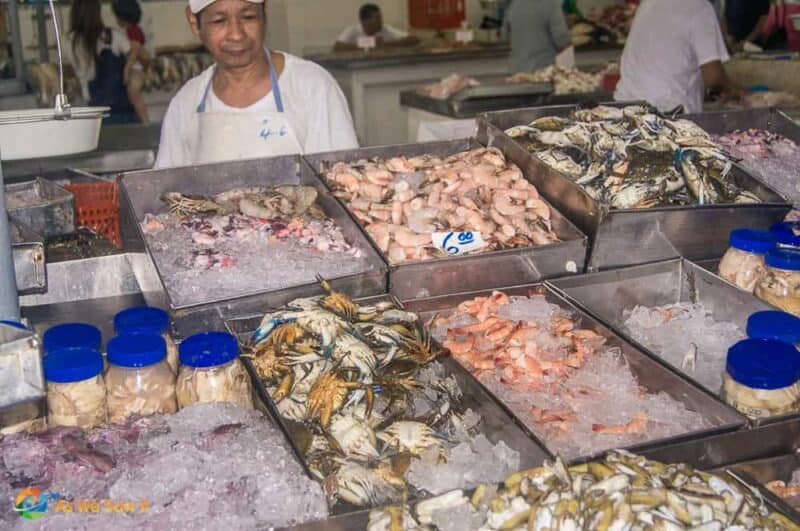
Believe it or not, Panama doesn’t have its own paper currency. Instead, the country uses the US dollar as the legal tender.
Panama does have its own coins, and they come in 1-, 5-, 10-, 25-, and 50-cent denominations. There’s also a one-Balboa coin. These coins are the same size, color, and weight as U.S. coins, and you can use both to pay for things.
Sure, foreign exchange sites may say that Panama's official currency is the Panamanian Balboa, but that’s not the reality. Everyone buys things with American currency, and the ATM machines even spit out U.S. dollars!
Prices may be listed with either a “$” (dollar) or a “B/” (balboa) symbol. It doesn’t matter either way though, because both mean the same thing and have the same value. The Panamanian balboa is pegged to the US dollar, so their value is the same.
💡 PRO TIP: Bring as much cash from home as you feel comfortable carrying, preferably in small denominations. That will save a lot of hassle, as not all places accept credit cards. It will also save you money. Because even though ATMs in Panama spit out U.S. bills, American banks often charge an exchange fee for your “balboas.” Omigosh. What a scam.
4. You can see a lot of Panama without changing hotels
One of the best things about Panama is that many of its best attractions are within an hour or two of the capital. This means that you can take day trips from Panama City to see a large part of the country without wasting time packing and moving.
Staying in one place can make your experience so much better! Not having to change hotels means you’ll have a lot more time for sightseeing—which is the thing that truly counts.
Driving in Panama is easy, so consider renting a car if you want to visit places that are further away, such as Boquete, Bocas del Toro, the Pearl Islands, or San Blas. But if that intimidates you, there are plenty of fantastic tours available online and locally.
5. Panama’s tap water is safe to drink
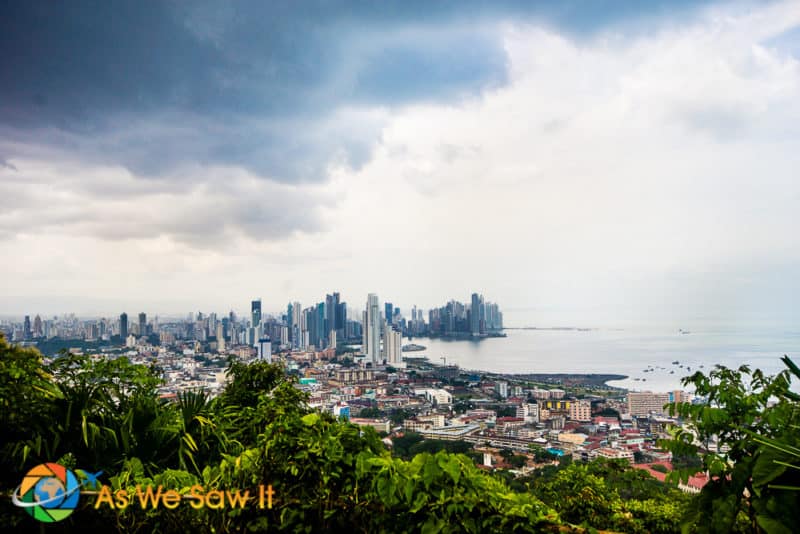
Unlike most countries, you don’t need to worry about the local tap water in Panama. It’s chlorinated and is perfectly safe. You are free to shower, brush your teeth, and drink as much as you like.
That said, the water quality can be questionable in the more remote villages. If you’re traveling off the beaten track, it’s best to play it safe and rely on bottled water.
6. You can’t drive to Colombia from Panama
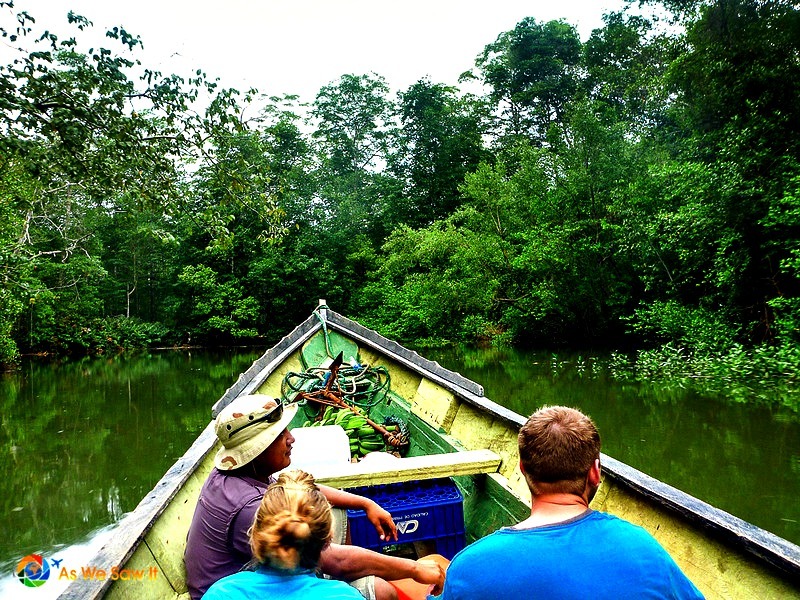
If you think you can drive from the U.S. to Colombia through Panama, you have another think coming!
Colombia is bordered by the infamous Darién Gap, which is pretty much impossible to cross. Not only is it a 60-mile stretch of impenetrable jungle and swamp, but it’s also a favorite hangout for people that you never want to meet face-to-face.
So since the Pan-American Highway doesn’t span this section of the world, you’ll have to fly or take a boat if you want to head south.
7. Panama has a good transportation system
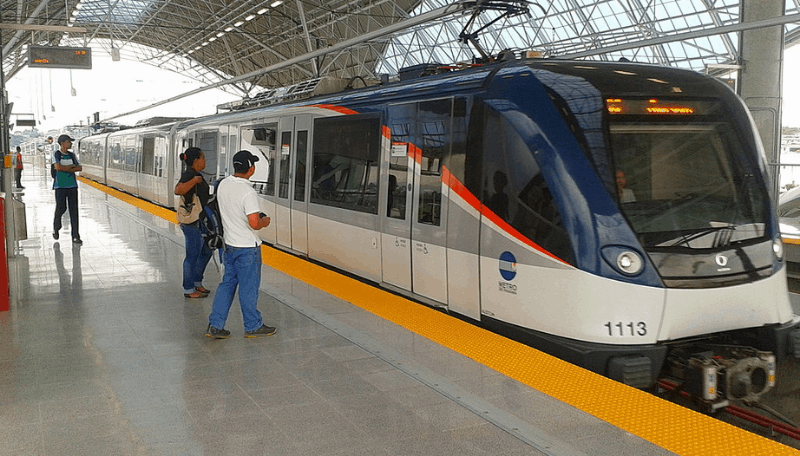
Panama's infrastructure is surprisingly solid compared to other Central American countries. Panama City has a decent metro system and local buses, making it relatively easy to get around. However, the metrobus system can be a bit of a challenge due to long queues and not enough buses running on time.
If you're heading out of town, you can catch a bus from Albrook Terminal, a major hub near Albrook Mall. This terminal offers a wide range of routes to various parts of the country. Alternatively, Panama has two international airports:
- Tocumen International Airport (PTY): This is where most international flights land. It's modern and always expanding.
- Marcos A. Gelabert International Airport (PAC): Also known as Albrook Airport, it serves Air Panama, which offers domestic flights and a few international routes like Costa Rica and Colombia.
While both airports are important, they are at opposite ends of the city, so coordinating flights between them can be tricky due to their locations and flight schedules. Ground transport between airports is available, but you might want to spend some time in Panama City between flights.
8. Not everyone speaks English
Despite Panama's long history with the U.S., Spanish remains the dominant language. However, English is taught in schools, and there are efforts to improve proficiency, especially in urban areas like Panama City. Recently, Panama launched a new English curriculum to boost students' skills and prepare them for global opportunities.
In places like Panama City and expat hubs like Boquete, you're more likely to meet locals who speak some English. But in rural areas, it's less common, so learning a few basic Spanish phrases will go a long way in making friends and getting around.
If you don't know any Spanish, don't worry! You can use tools like Google Translate or gestures to communicate. And remember, the more you immerse yourself in Spanish, the faster you'll pick it up.
9. Panama has amazing weather
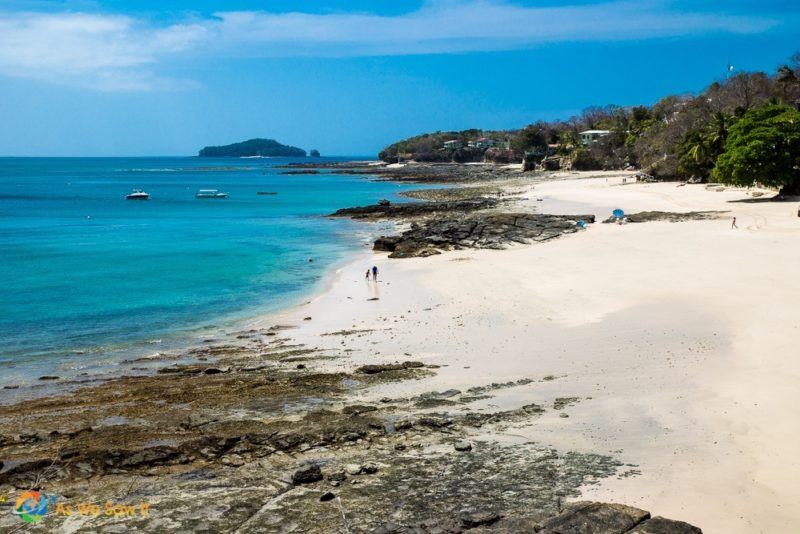
As a tropical country, Panama enjoys hot weather throughout the year. Its wet season is from May to November, but heavy downpours can also occur during the dry season, between December and April.
The dry season is considered the best time to visit Panama because you won’t have to suffer heavy downpours every day. Most tourists visit during that time to avoid the rain and enjoy the country’s tropical nature.
If you’re often worried about hurricanes before traveling, Panama is your best destination. It’s so far out south and luckily outside the hurricane belt. So, you won’t have to worry about any unfortunate weather surprises during your trip.
10. Panama is more than a tropical beach vacation
Sure, Panama has an iconic manmade canal, plenty of idyllic beaches, and islands with resorts, cocktail bars, and spas. However, there’s so much more to the country than that.
Panama City caters to all tastes; it has everything from colonial ruins to skyscrapers.
The country is also a haven for nature lovers. Like its next-door neighbor Costa Rica, Panama is also famous for having one of the most biodiverse rainforests in the world, as well as some of the most beautiful beaches in Central America.
Not far away from Panama City, you can swim with sharks off Isla Coiba, laze in a hammock in the San Blas islands, or chill in a cocktail bar in Bocas del Toro (our favorite snorkeling spot!).
However, for the ultimate adventure, you can head to the depths of the Darién Gap jungle and see what Panama was like before they built the canal.
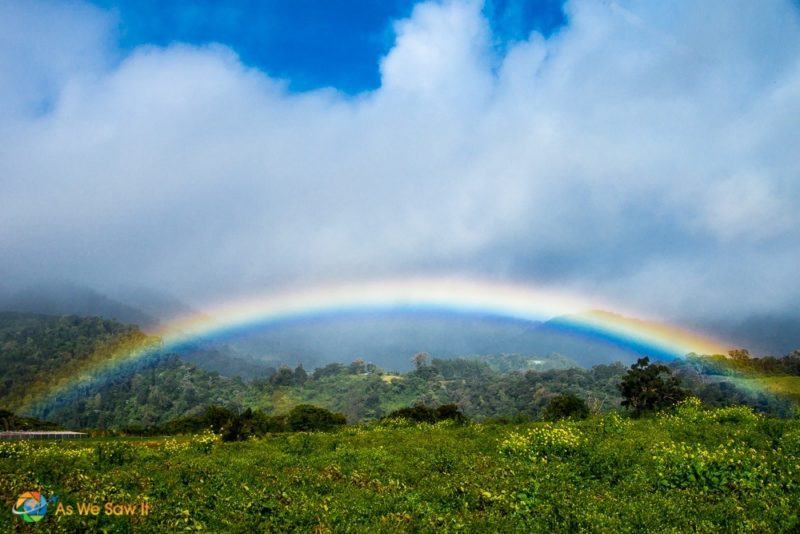
11. Panama is safe
Panama is generally a safe destination for travelers, with many areas offering a secure and enjoyable experience. It's one of the safest countries in Central America, known for its friendly people and laid-back atmosphere.
However, like any place, there are areas that require extra caution, such as certain neighborhoods in Panama City, like Calidonia and El Chorrillo, and the Darien Gap near the Colombian border.
For a safe trip, follow basic precautions: avoid displaying signs of wealth, use secure ATMs, and stay aware of your surroundings. Panama's tourist police also help ensure visitor safety in popular areas.
12. Panama produces some of the world’s best coffee
Panama is known for its excellent coffee worldwide. It’s so good that people drink it around the clock, not just at breakfast.
The best beans in the country are grown around Boquete, in Chiriqui Province.
Coffee growers produce plenty of varieties, but the most coveted so far is the Geisha coffee bean. It’s one of the most sought-after varieties on the planet, so much so that auction prices have topped $1,000 per pound!
13. There’s no such thing as personal space.

In Panama, personal space is a bit more flexible. People love to get cozy during conversations, so be prepared for some friendly proximity.
Panamanians are super curious and love asking personal questions like “Are you married?” or “How old are you?” It's not nosy; it's just their way of showing interest and making friends. Think of it as a cultural speed-dating session!
And forget about being politically correct. We Americans are used to treating everyone equally, but Panamanians have no problem with charging higher prices to foreigners. It’s called “gringo pricing,” and if you look like a tourist, you’ll probably pay more.
14. Panama has two independence days
Panama celebrates not one, but two independence days in November! The first independence day, November 3, marks Panama’s separation from Colombia in 1903 and its emergence as a fully sovereign nation.
Later in the month, on November 28, they celebrate their independence from Spain in 1821. This one was a bloodless revolution, and it’s just as festive as the first Independence Day.
Expect fireworks, traditional dances, and plenty of delicious food.
15. You must pack for the climate
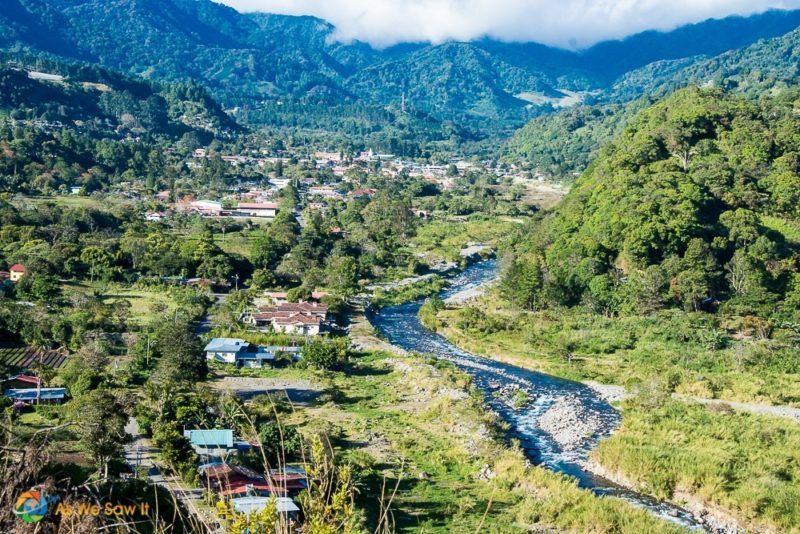
Regardless of what month you travel, Panama will be hot. Make sure to pack lightweight clothes and a pair of durable sandals. You’ll also need a hat, sunglasses, and sunscreen.
If you plan to do any trekking, a good pair of hiking shoes will make your experience a lot more enjoyable.
Always bring a jacket, too. Even if you don’t plan to visit mountainous spots like Boquete, El Valle de Anton, and Santa Fe, air conditioning can be quite cold … and drafty.
Inspired? Pin this post and share it with your friends!
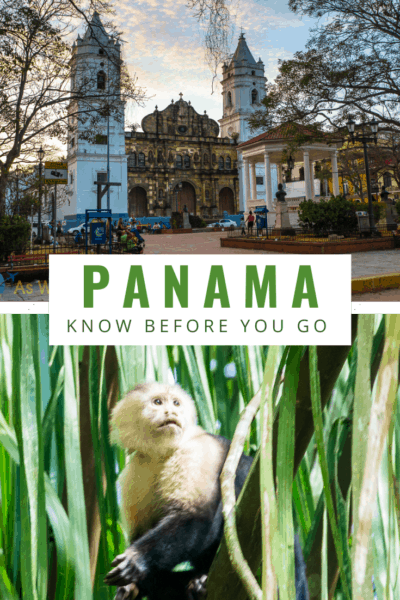
| PANAMA TRAVEL PLANNING ESSENTIALS |
|---|
| ✔ Accommodation: Don't overpay for your stay! Trivago shows prices from all the top booking sites so you can find the best hotels and rates. ✔ Travel Guide: This book is Amazon's top seller. ✔ Flights: Panama City's Tocumen Airport code is PTY. Check prices here. ✔ Airport transfer: Use a taxi or Uber, or book an airport shuttle for slightly more. Your driver will greet you in the airport, help with your bags, and take you to your hotel. ✔ Visas: Find out what you need and apply here. ✔ Travel insurance is an inexpensive and smart investment. You're covered for medical emergencies, hotel cancellations, flight delays, baggage delays, lost luggage, and more. Check prices here. ✔ Getting around: Use taxis, Uber, buses and the metro to get around Panama City. Elsewhere, there's an extensive public bus system. We recommend renting a car to make the most of your vacation. ✔ Currency. Panama's currency is known as the Balboa (/B.), but it only exists in coinage. In reality, the country uses the US dollar. |
16. Taxis can be pricey.
In our experience, it’s better to use Uber rather than taxis to get around in Panama.
For starters, you’ll be sure you’ve communicated your destination correctly, thanks to the mobile app. More importantly, Panamanian taxi drivers are notorious for overcharging tourists.
Taxis aren’t metered, so if you need to take a taxi, agree to a price before you get in.
ⓘ TIP: Taxi drivers tend to charge more when they pick you up at a hotel. If you want to save money, hail a taxi from a block away.
17. Panama has amazing wildlife

As the land bridge between North and South America, Panama is one of the most biodiverse places on earth, with 125 animal species found nowhere else in the world.
With everything from howler monkeys to poison dart frogs, sloths, blue morpho butterflies, and coatimundis, we were blown away by the variety of wildlife we saw while living in the country.
Panama is a land made for nature lovers and bird watchers. The country hosts approximately 1020 species of birds, including the quetzal and harpy eagle, and is considered one of the world’s best birding sights.
18. Don’t expect fast service
Panama’s Spanish heritage shines at mealtimes. Here, dining out is an occasion to be enjoyed, not rushed. Which means that the table is yours for the evening, should you wish.
We’ve watched as tables would order a single course, sit for an hour chatting and drinking, then ask for the menu again to order something else… and this could go on all night. No one hurries you. No one hints it’s time to leave. The rhythm is yours to set.
And don’t expect your check to appear as soon as you finish your entrée. The bill won’t come until you signal you’re ready—because here, the meal ends when you say it does.
💡 PRO TIP: To avoid stress about being late, don’t book a tour that will start right after lunch!
19. No one is ever in a hurry in Panama

North Americans and Europeans treat time like a currency—precise, measured, never wasted. But in Panama? Time bends.
When we lived there, our cable installer missed three appointments. When we finally complained, he just shrugged. That’s when we realized: Panamanians haven’t just adopted ‘island time’—they’ve perfected it. Schedules are suggestions. Deadlines are elastic. And no amount of urgency will make a bus leave sooner or a show start on time.
If you’re the type who lives by a planner, put it away. Here, the clock ticks differently—and learning to move with it isn’t just practical, it’s survival.
20. There's no North American tipping in Panama
Tipping in Panama isn't like in the U.S. Here, tips are seen as bonuses for good service rather than automatic expectations.
At restaurants, 10% is standard, especially for dinner service. But check your bill before you pay—some places automatically add 10% service.
For other services:
- Hotel porters (only at higher-end places): $1-2 per bag
- Taxi drivers: No tip expected, but round up if they went above and beyond
- Everyone else: Generally no tipping needed
Congratulations—you’ve just saved 10% on your vacation budget!
ⓘ CULTURAL TIP: Overtipping isn't generosity—it's cultural ignorance. Tourists who leave 20% tips distort local wages, make services unaffordable for Panamanians, and degrade authentic hospitality. The standard is 10%. Stick to it. Anything more damages the country's economy and social norms.
Bonus Section: Do’s and Don’ts in Panama
Since you reached as far as here, here’s a bonus section about what to do and what to avoid doing in Panama!
- Don’t walk in unfamiliar streets at night or alone. The country is safe, but there are still some danger zones that you should avoid altogether.
- Do carry a bottle of water all the time. The weather in Panama is blazing, so it’s better to keep a bottle of water on you to stay hydrated.
- Do expect sudden downpours, even when the forecast doesn’t say anything about it. During the wet season, heavy rain occurs nearly every day, so you better be prepared.
- Don’t forget to carry a safe case to keep your belongings dry when it starts raining.
- Do use bug spray if you’re exploring tropical areas. You don’t want to go home with a couple of bites from mosquitoes or other critters—those are quite common in Panama!
- Don’t use a taxi unless you confirm the fare first. As I mentioned earlier, taxi drivers can overcharge tourists.
- Do expect to hear a lot of fireworks during your time in Panama. Those folks love celebrations, and they often use fireworks at random times without any indication of a festival. So, don’t let it creep you out!

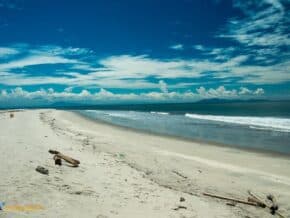
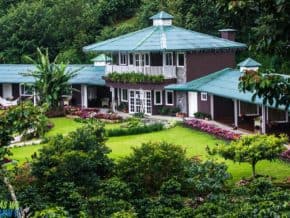
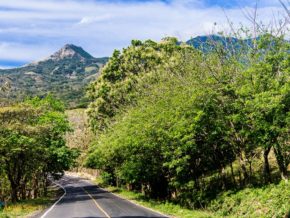
Thank you so much for the in-depth review on Panama.
My pleasure!